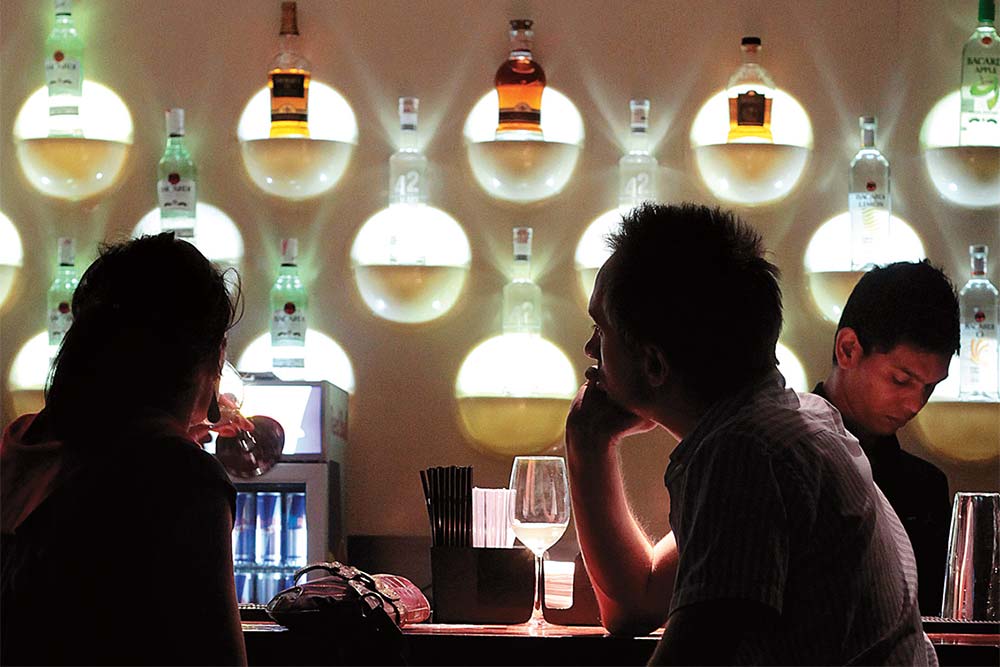We are a thirsty, tropical country and all we’ve had by way of a frosted bottle loaded with flavour and a touch of alcohol has been the spirited Bacardi Breezer. The breezer has ruled the alcoholic ready-to-drink (RTD) market in India for nearly a decade now. Not that the competition didn’t try — in 2004, two years after Breezer was launched, UB put out Shotz and Cruiser but, due to tepid demand they were withdrawn in a few years. Balrampur Chini’s Xotica and Shaw Wallace’s Veba shared the same fate. With price in the ₹35-50 range — excise was high and distribution tough — RTDs were more expensive than beer and other spirits, which did not cut ice with consumers. Cut to 2011 and companies are back in the RTD market, which is growing at 30%.
Global Wines & Spirits (GWS) and Beam India introduced a clutch of RTD variants across the rum, vodka and Scotch whisky categories — the first time RTDs that aren’t rum-based have come into the country. Beam India launched its first scotch-based ‘Teachers & Soda’ and ‘Teachers & Cola’, last December. Both pre-mixes are based on the already popular Teachers brand of scotch whisky and cost ₹100-160 for a 330 ml can (prices vary between states based on tax laws). GWS’s lemony vodka-based Sniffer (₹100-120 for 275 ml bottles) was launched in mid-2011. In the last few months, Bacardi has also expanded its RTD portfolio and launched stronger, 8% proof, pre-mixed Bacardi cola and lemon variants in 275 ml bottles. Over the years, Breezer has seen huge growth across India says Mahesh Madhavan, president and CEO, Bacardi India, which has a 95% market share. “This category will grow both in volumes and choices in the near future.”
What has changed? Research firm Business Insights attributes the return of RTDs to the growing young adult population, high disposable incomes, higher aspirations and more women trying alcoholic drinks. “Young people now are more willing to spend money on having a good time,” says Harish Moolchandani, Beam India’s MD. “RTDs are a readymade fit for their lifestyles. They are easy to carry and consume. Also, women are looking at RTDs as alternatives to hard drinks or beer and wine. ”
RTDs are pre-mixes in combinations of alcohol (4-8%) and fruit juice or aerated drinks. The Indian market for RTDs is estimated at 1.2-1.6 million cases (of nine litres each) or roughly 0.5% the total Indian spirits market of 240 million cases. However, Jack Daniels in cola and lemonade, and Smirnoff Ice, among the world’s best-selling RTDs, are not yet in India.
The lack of options itself contributed to a stagnating market. “People who did not want a rum-based RTD had no choice,” says Jatin Virmani, COO of GWS. “As people travel and try new RTDs abroad, they want the same in India.” A shopkeeper in Chembur, Mumbai, says though RTDs are bought mostly by the young, even whisky and rum drinkers ask for it. Already, vodka-based RTDs are popular — for instance, the multi-flavour VK Vodka Kick, imported from the UK, is available in many markets here.
Spirited comeback
Companies are high on prospects. “RTDs are one of the most awaited brand extensions for the scotch whisky category,” says Moolchandani. He hopes that new and younger drinkers will take to Teachers, as RTDs offer them a low-price entry point to taste a premium liquor brand. Bacardi’s Madhavan adds that RTDs enhance the consumer’s interaction with the brand. GWS, on the other hand, is using RTDs to avoid directly competing with more established vodka brands. “The vodka market is the fastest growing spirit market in India but it’s fast becoming crowded,” says Virmani.
However, pan-India distribution is still not easy. “Each RTD brand needs to be registered individually in each state,” says Virmani. Also, each state has its own laws and methods of granting licence, making it very complex and time consuming.” For now, most brands have set up shop in Delhi, Maharashtra and Haryana. Companies usually wait till April before applying for new licences as states makes a new excise and liquor policy during the Budget.
Right distribution will determine the success of any new launch. Beam, which already distributes its liquor on a pan-India basis, has opted for a market-by-market approach. After Mumbai, the brand is now available in Goa and Daman and Diu. Bacardi, following the same strategy, is now available in Goa and Haryana, and will expand to other markets gradually. “Each state is like a separate market,” says Beam’s Moolchandani. “One has to look at it at a granular level and understand what drives sales.”
Ensuring the product’s appeal to its target group will be vital. That means educating salesmen and consumers, paying attention to store-front displays and even providing refrigerators (RTDs are served cold). Advertising and events are next on the agenda. “Our tie-up with MTV for the Aqua Noon programme will kick in shortly,” says Moolchandani. GWS has been holding ‘Sniffer Nights’ at pubs and bars in Haryana. RTDs are finally here. Now, are Indians ready to drink?











